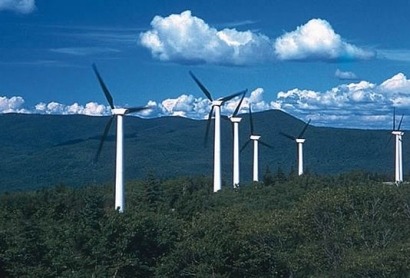
Sturbridge, Mass., recently developed local legislation aimed at keeping solar farms out of residential areas. And in New Hampshire, a group has recently called for a moratorium on all commercial wind projects. The moratoriums do not stop on American soil. In 2011, the Province of Ontario Canada imposed a moratorium on all offshore wind farms. In Hampshire, England, a large solar farm was greeted with opposition not just from residents, but also from councilors.
Companies need to look at their strategy of building public support to counter the NIMBY effect to projects, as the outcome for a smooth entitlement of your project is at risk. U.S. Chamber of Commerce stated that in 2011 over 350 energy projects were delayed or abandoned due to public opposition – and the economic impact of these projects were estimated at about $1.1 trillion in GDP and 1.9 million jobs a year. That is a lot of missed opportunity for jobs and clean energy, all due to public opposition.
Having been in the business of running public affairs campaigns to build public support for controversial projects for nearly twenty years, I can tell you that the key piece of the puzzle missed by developers in their public outreach strategy is the “campaign” style approach the opponents seem to do so well.
Too often renewable energy developers do not offer up an aggressive public affairs campaign when they announce a project, often letting crucial time pass between the announcement of a proposal and when public outreach begins. Opponents use this time to build opposition and sway residents against these projects. By running a political style campaign, you can reach all residents, identify the supporters, and harness them into action for your project. Here are some crucial tactics that renewable energy should consider in their outreach efforts:
Announce your proposal out correctly – when announcing a project, have a few pieces of direct mail ready to hit all the households in the host community to spread the positive benefits of the project. Follow this up with newspaper web ads, and phone banking of the community, to again, further indentify supporters. Have an open house to answer resident’s questions and recruit supporters. All of this should be done in the first few weeks after announcing a project, to not allow the opposition to gel and take over the narrative. Too often companies allow precious time between announcing a project, and disseminating information to the community.
Meet with identified supporters – once you have a database of supporters built from the mailers, ads and phone calls, the developer should meet with them so that they know they are not alone in their support, and they are a grassroots force that can begin to write letters to public officials, the newspapers, and attend key public hearings and speak out. Rarely will a supporter write a letter for you or attend and speak at a public hearing if you have not had the face to face contact with them previously.
Build "grasstops" support – In addition to reaching out to residents, stakeholders and well known members of the community, one should also meet with businesses, associations, and other civic groups should to attempt to bring on them board for support.
Keep an updated database – As you begin to identify supporters of your project, that information should be put in a database to refer to throughout the entitlement process of your proposal. Coding your supporters by local legislative districts can also help if you need to target a particular local legislator who may be wavering in support.
The key goal of these types of campaigns is to never allow the opponents an opportunity to seize the moment because of inaction by the developer. Just announcing a renewable project is not enough to assume that everyone will be on board to support it.
By running an aggressive campaign and identifying supporters, you have taken a key step of any successful campaign. Knowing what to do with the identified members of a community who support your project is the next step, and one that will allow vocal support to outnumber opponents – whether it be petitions, letters or crowds at public hearings.
In the new year, expect NIMBY opposition to renewable energy. Meeting this challenge with proven grassroots techniques will be critical to making 2013 a success for renewable energy.
This is precisely the strategy that does not work in Vermont. Keep it up and you'll make the world safe from wind energy, at least in Vermont. At some point you might want to factor in that these are huge machines that do not belong near where people live. Time to get real, folks. Neighbors of these proposals, who get labelled as "opponents" do not want to live near them, and for good reason.
The RCBC Waste To Energy System is the only economically viable solution for eliminating municipal solid waste, that is commercially available today, and has been proven to meet air quality standards. * The RCBC Waste To Energy System can deliver a “No-Landfill” means of eliminating municipal garbage while producing income more than sufficient to pay for itself. The System accepts municipal solid waste (garbage), extracts recyclable materials and combusts the remainder to create steam that drives a standard turbine-generator to make electricity. The system reduces the garbage to an inert ash to produce a product that can be used as construction fill or soil improvement while producing recyclable materials and clean electric energy to be sold.
Maybe if these developers didn't buy property on forested, residential land there wouldn't be such push-back from residents who made the biggest investment of their life just to find a solar power plant in their backyard. In Sturbridge's case, the Zoning By Laws are permissive and do not allow for industrial use in residential zones.

